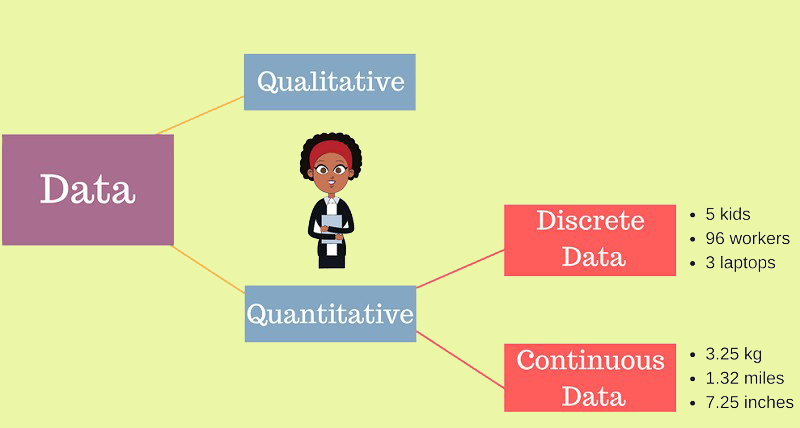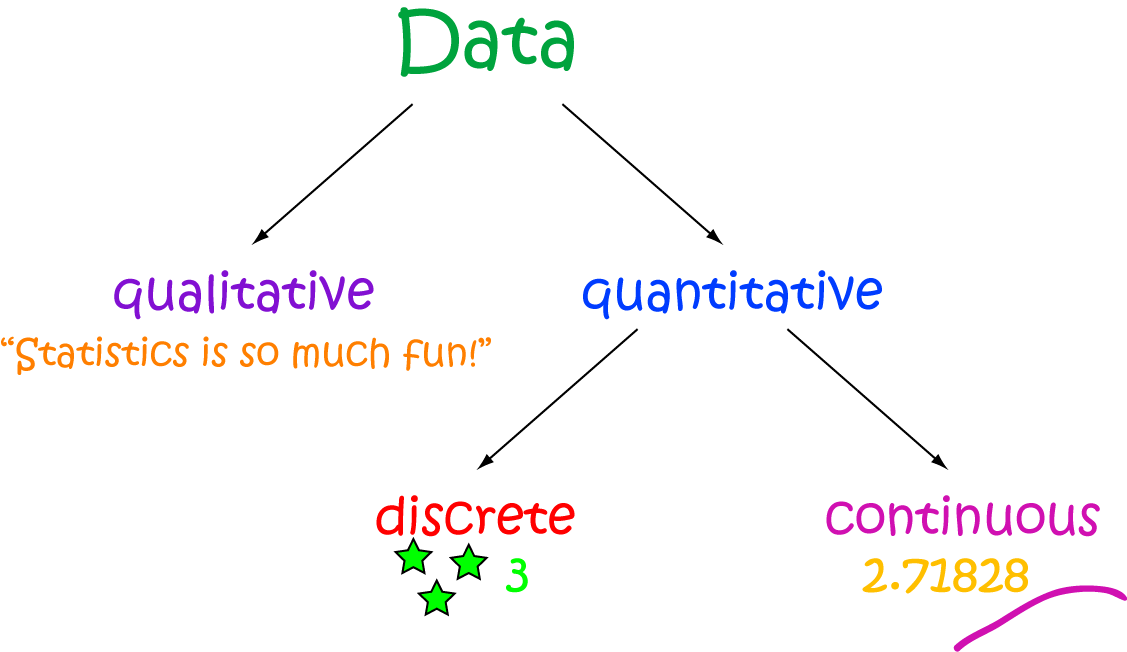Statistics is an important field that is used in various industries, from healthcare to finance. Understanding the basics of statistics can help you make informed decisions and analyze data effectively. In this post, we will introduce you to the basics of statistics and discuss various types of data. First, let's define what statistics is. Simply put, statistics is the study of numerical data. It involves collecting, organizing, analyzing, and interpreting data to draw conclusions and make predictions. When it comes to data, there are two main types: discrete and continuous. Discrete data consists of separate, distinct values that cannot be subdivided, such as the number of students in a class or the number of cars in a parking lot. Continuous data, on the other hand, consists of measurements that can be subdivided, such as temperature, height, or weight. To better understand the difference between discrete and continuous data, let's look at a few examples. Discrete data might include the number of goals scored in a soccer game, the number of items sold in a store, or the number of pets owned by a household. Continuous data might include the temperature outside, the height of a person, or the weight of an object. Now that we have a basic understanding of the types of data, let's take a closer look at some of the techniques used in statistics. One of the most important concepts in statistics is probability, which is the measure of the likelihood of an event occurring. Probability is used in a variety of fields, from gambling to insurance, to assess risk and make predictions. Another technique used in statistics is hypothesis testing, which involves formulating an educated guess about a population parameter and testing whether the data supports or contradicts the hypothesis. This method is used to help determine whether an observed effect is real or whether it occurred by chance. When it comes to analyzing data, there are many different tools and techniques available. Some of the most common include regression analysis, correlation analysis, and analysis of variance (ANOVA). These methods can help you identify trends, relationships, and patterns in your data. In conclusion, statistics is a complex and fascinating field that is used in many different industries. By understanding the basics of statistics and different types of data, you can make informed decisions and draw intelligent conclusions from your data. So, whether you're a student, researcher, or business owner, taking the time to learn about statistics can be a valuable investment in your future success.
If you are looking for Definition of Direction - Math Square you've came to the right web. We have 6 Images about Definition of Direction - Math Square like Discrete Data - Math Definitions - Letter D, Mathematics and also Discrete Data - Math Definitions - Letter D. Here you go:
Definition Of Direction - Math Square
 maths.olympiadsuccess.com
maths.olympiadsuccess.com discrete definition
Discrete Data - Math Definitions - Letter D
 www.subjectcoach.com
www.subjectcoach.com discrete data continuous definition math numbers example values number value certain only real definitions letter
Introduction To Statistics
 www.slideshare.net
www.slideshare.net discrete continuous
What Is Discrete Data In Math? - Definition & Examples | Study.com
 study.com
study.com discrete data math examples definition study graph lesson
Mathematics
 mathematicszz.blogspot.com
mathematicszz.blogspot.com discrete data statistics mathematics continuous counted
Discrete Data ~ A Maths Dictionary For Kids Quick Reference By Jenny Eather
 www.amathsdictionaryforkids.com
www.amathsdictionaryforkids.com discrete data example kids quantitative maths continuous days week
Discrete data ~ a maths dictionary for kids quick reference by jenny eather. Discrete data. Discrete continuous
 maths.olympiadsuccess.com
maths.olympiadsuccess.com  www.subjectcoach.com
www.subjectcoach.com  www.slideshare.net
www.slideshare.net  study.com
study.com  mathematicszz.blogspot.com
mathematicszz.blogspot.com 
0 Post a Comment: